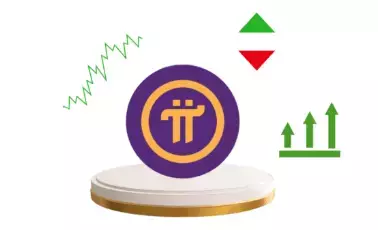Exploring Pi Network's unique approach to blockchain, diverging from EVM compatibility and championing sustainability with the Stellar Consensus Protocol.

Pi Network, Blockchain, and the Green Revolution: A Sustainable Future?
In the rapidly evolving world of blockchain, Pi Network is carving its own path. Eschewing the popular Ethereum Virtual Machine (EVM) compatibility, Pi Network focuses on scalability and sustainability with the Stellar Consensus Protocol (SCP).
Why Pi Network Ditches the EVM Party
EVM compatibility offers convenience, allowing blockchains to tap into Ethereum's extensive ecosystem. However, it also inherits Ethereum's limitations, including high energy consumption and scalability issues. Pi Network, however, believes there’s a better way. By adopting SCP, Pi Network aims for an architecture optimized for mobile use and low resource environments.
Stellar Consensus Protocol: A Greener, More Efficient Blockchain
The Stellar Consensus Protocol (SCP) is based on Federated Byzantine Agreement (FBA). This enables decentralized consensus without energy-intensive mining. Transactions are validated through trusted nodes, ensuring fast and low-cost transactions. This is particularly crucial for Pi Network's mobile-first design. It ensures that the network can scale effectively without compromising performance. This approach aligns with Pi's mission to make cryptocurrency accessible to everyone, regardless of technical expertise or financial resources.
Mobile-First Design: Blockchain for the Masses
Pi Network's mobile-first approach is a game-changer. It lowers the barrier to entry, particularly in emerging markets, allowing users to mine and transact using smartphones. This design ensures that mobile transactions remain secure and efficient, supporting real-world applications from digital commerce to decentralized identity. It's about expanding the reach of Web3 beyond tech enthusiasts and into the mainstream.
The Green Revolution: Blockchain's Environmental Responsibility
Blockchain's environmental impact is a growing concern. Pi Network addresses this head-on with SCP's energy-efficient design. By avoiding mining altogether, Pi Network significantly reduces its carbon footprint and hardware waste. It's not just ethical; it's strategic, as regulatory and consumer pressures increasingly favor sustainable technologies. In Bolivia, a pragmatic embrace of blockchain and digital assets is emerging, with plans to use smart contracts for public procurement, potentially reducing corruption. Moreover, citizens could declare crypto holdings into a foreign-exchange stabilization fund.
Challenges and the Road Ahead
Diverging from EVM compatibility presents challenges. Developer onboarding requires new tools tailored to SCP, and interoperability with EVM-based platforms may require custom solutions. Education and outreach are crucial to build trust in the SCP model. However, Pi Network's vision remains clear: to build a blockchain that is scalable, sustainable, and inclusive.
A Sustainable Future for Blockchain?
Pi Network's choice to embrace SCP signals a commitment to trust, efficiency, and environmental responsibility. While most chase EVM compatibility, Pi Network takes the road less traveled. And that might just make all the difference in the long run. So, while others are stuck in the Ethereum echo chamber, Pi Network is busy building a greener, more accessible future. Who knows, maybe they're onto something truly revolutionary!



































![The Graph Price Prediction [GRT Crypto Price News Today] The Graph Price Prediction [GRT Crypto Price News Today]](/uploads/2025/11/07/cryptocurrencies-news/videos/690d4df44fe69_image_500_375.webp)










































